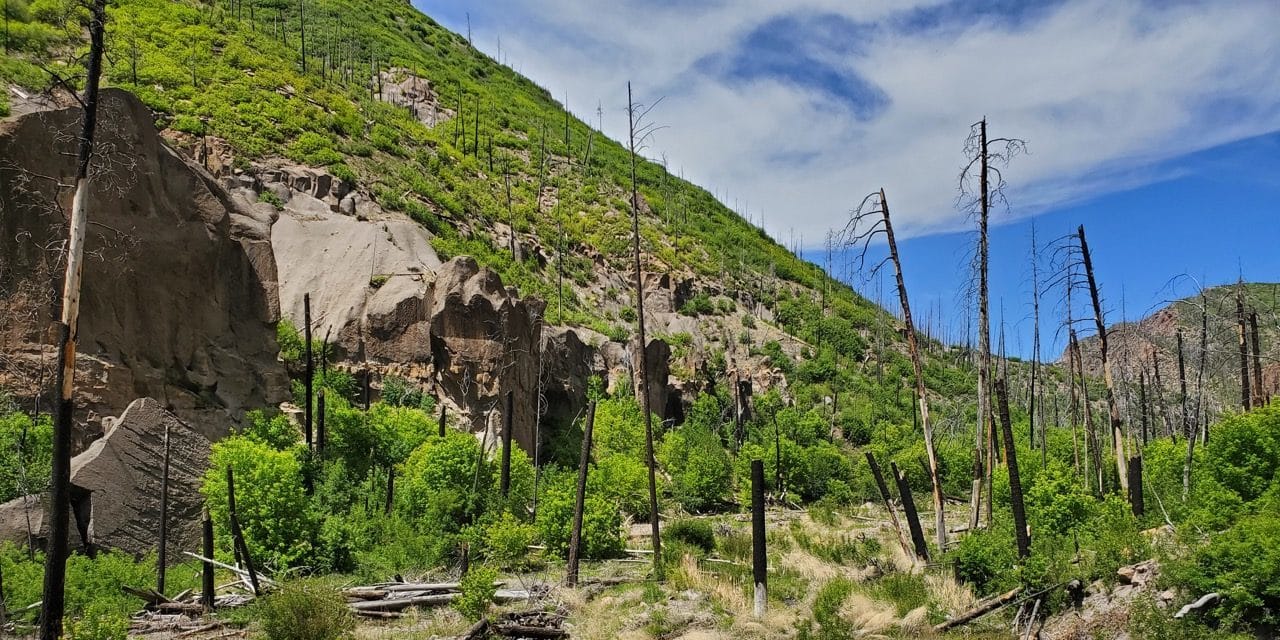New research shows that megafires in western US national forests are not increasing

by The Forest Advocate May 30, 2020 updated Mar 1, 2022
Most forest fuel treatment and logging projects throughout the west are based on the assumption that megafires have been increasing in recent decades, damaging forests and preventing them from re-growing. This is the primary assumption behind the two large-scale and intensive thinning/prescribed fire projects currently proposed for the Santa Fe National Forest, including one in the mountains just east of Santa Fe.
Conservation ecology researchers Dominick DellaSala and Chad Hanson published a peer reviewed study in 2019 disputing this assumption. They found no significant increase in the size of large high-severity burn patches from the early 1990s through 2015. Dr. DellaSala stated that “This is the most extensive study ever conducted on the high-severity fire component of large fires, and our results demonstrate that there is no need for massive forest thinning and salvage logging before or after a forest fire.”
This study also dispels the view that large high intensity fires are unnatural, and instead affirms that they are ecologically important to support biodiversity in forests.
In this megafire trend study, the researchers analyzed data on large high-severity burn patches across 11 western dry pine and mixed-conifer forests over three decades. The study area includes multiple forests of northern New Mexico, including the Santa Fe National Forest.
Since many forest management decisions are being made for the Santa Fe National Forest based on the assumption that megafires are increasing, this study is highly relevant and should be taken seriously into account in forest management project planning.
Read an article about this study here, and see the full study here.
Update:
Due to recent large fires in the Western US, it may appear that high intensity fire patches have increased since 2015. However, according to Chad Hanson, fire intensities from 2016-2021 have been very much within the range of fires during the years 2000-2015 — some at the lower end of that range and some around the higher end. The large fires have mostly been low/moderate-severity, with some big high-severity fire patches.
The Forest Advocate
Santa Fe, New Mexico
